Gender gaps and structural transformation in a new development era
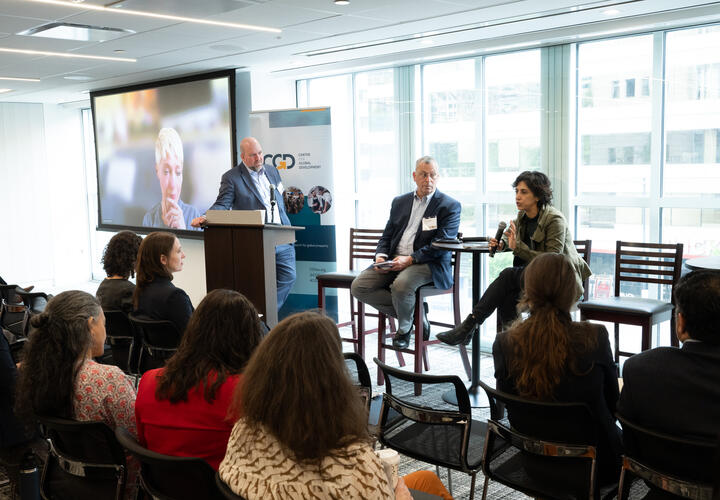
This article was also published by the Center for Global Development.
At an event organized by the Yale Economic Growth Center (EGC) and the Center for Global Development (CGD) and hosted by the Gates Foundation on the sidelines of the 2025 World Bank and IMF Spring Meetings, researchers shed light on how gender gaps interact with and are impacted by structural transformation, including processes of urbanization, industrialization, and digitalization. Speakers at the event offered a rigorous challenge to those voices that have treated gender equality as peripheral to macroeconomics.
The past few years have seen significant shifts in geopolitics, trade patterns, and foreign aid, with implications for gender inequality, following setbacks worldwide from the COVID pandemic. Currently, the majority of low- and middle-income countries (LMICs) are facing a combination of shrinking fiscal space, high levels of debt, and economic shocks that stand to limit their economic development. In this context, this discussion hoped to focus on understanding structural transformation processes in LMICs and deconstruct their distributional impacts by gender. We were interested in understanding how such processes affect new forms of work, the availability and quality of jobs in specific sectors/occupations, the magnitude and distribution of unpaid care and domestic work, and the benefits of improved talent allocation along gendered lines.
Growth is not a panacea for ending gender inequality, and gendered labor market gaps extend well beyond labor force participation
 Kaveh Sardari
Kaveh Sardari
Rohini Pande discusses research from EGC's Gender & Growth Gaps project during the event.
“We need to move beyond a single indicator like labor force participation if we truly care about better jobs for women." - Rohini Pande
Rohini Pande opened the discussion by reflecting on how early research on structural transformation focused on shifts in the share of GDP from agriculture or manufacturing or services, overlooking impacts on individual well-being, for which the quality and distribution of jobs mattered. Drawing on EGC’s Gender & Growth Gaps Project and a recent cross-country analysis with co-authors, Rohini noted that across a wide set of labor market indicators there is little evidence that economic growth in and of itself systematically reduces gender gaps, with the notable exception of marketization of work (increased paid work). Conversely, closing gender gaps does not hurt growth and can, in fact, improve talent allocation, productivity, and economic outcomes. This was echoed in recent analysis by Oriana Bandiera and co-authors on worker productivity in a multinational corporation operating in over 100 countries, which highlights how better matching of talent to opportunity can deliver economy-wide gains when women’s economic participation is enabled.
Speakers agreed on the policy importance of focusing on a wider range of labor market indicators that include the quality of jobs, sectors and occupations of employment, time-use data on paid and unpaid work, and gender wage gaps. Focusing purely on aggregate labor force participation and employment rates can obscure shifts in terms of the allocation of specific types of work between women and men. Gender gaps may emerge within specific types or categories of work (unpaid or paid, informal or formal, agriculture or services) as economies undergo structural change, as found in forthcoming research presented by Gaurav Chiplunkar on the expansion of 3G networks and smartphone use in Mexico. Further, as unpaid work - whether on care work or domestic chores - is not included in measures of labor supply, Oriana Bandiera emphasized the need to measure productivity at home alongside productivity at work without gendered biases, noting that women are not necessarily better in home production and men are not necessarily more productive outside the home. Harmonizing time-use data in a consistent way is an important task that will allow for rich, dynamic, and less biased analyses of productivity and talent allocation.
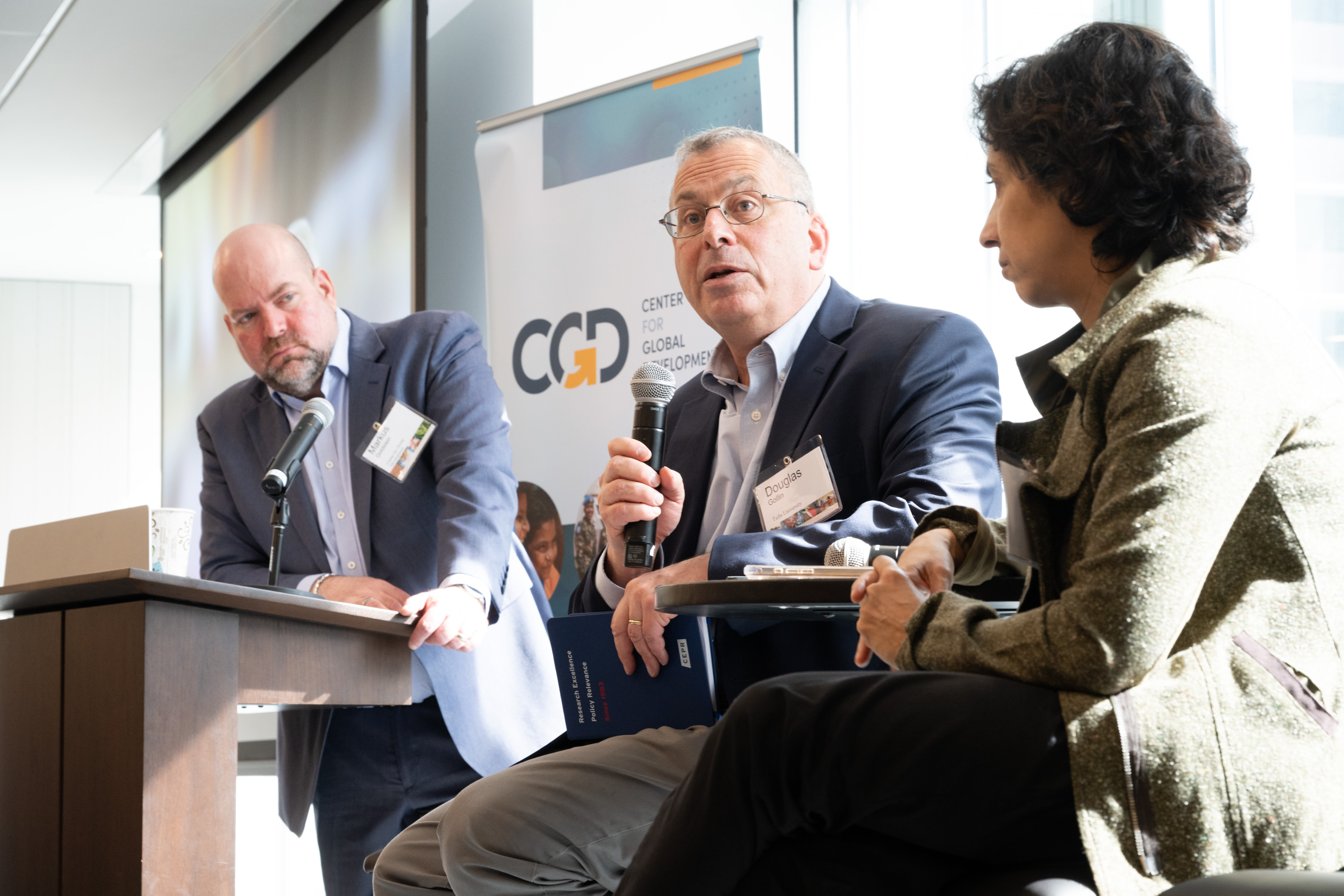 Kaveh Sardari
Kaveh Sardari
Douglas Gollin shares findings from a recent paper during the event where he and coauthors analyzed the gender division of unpaid and paid work across countries.
Macroeconomic models need to better integrate gendered aspects of structural transformation
"Gender gaps are not just micro-level concerns; they have macroeconomic consequences that we can now measure." - Douglas Gollin
Researchers shared papers that meaningfully integrated gender dimensions of structural transformation into economic models in novel ways. Douglas Gollin shared findings from a recent paper where he and co-authors integrated time-use data into a macroeconomic model to analyze the gender division of unpaid and paid work across countries. The paper shows how different actors appear to influence the division of work in different contexts, with economic growth explaining only a portion of the differences across countries. Their study shows that institutions, policies, social norms, and patriarchal systems critically shape how work is divided and how gender gaps evolve. Lindsey Uniat presented recent research from India with co-authors that integrated time-use data into a household labor supply model, revealing that urban-rural disparities in female labor force participation (FLFP) seem to be driven by differences in part-time and informal work. They conclude that economic growth isn’t enough to boost FLFP, necessitating changes in gendered institutional norms and reductions in labor market discrimination. Louise Paul-Delvaux’s microeconomic research illustrated how contexts with large informal sectors, such as Morocco, see both employment and gender wage gaps shift following minimum wage changes, requiring more complex welfare analysis in macro-models to understand net benefits and distributional consequences.
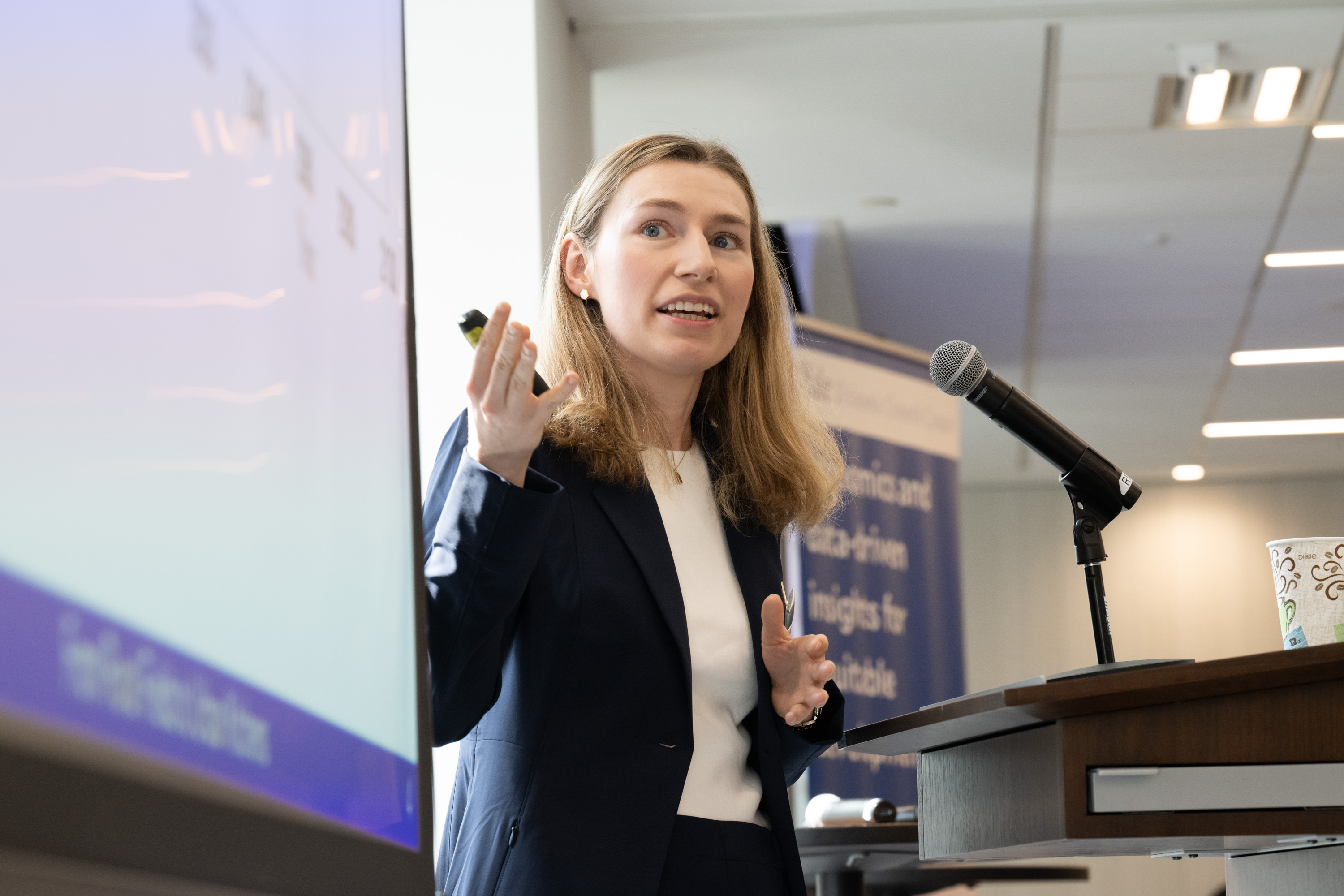 Kaveh Sardari
Kaveh Sardari
Lindsey Uniat presents recent research from India during the event.
Cross-country lessons need to be interpreted and applied through a context-specific lens, and short-term context-specific trials may not scale in predictable ways
Pande pointed to how we need to look beyond cross-country averages to analyze patterns within countries and over time, given the strong country and regional variation found in her research. Bandiera also underscored the importance of context, and that evidence from interventions that are small-scale and controlled must be interpreted through the lens of local norms and longer-term social dynamics to inform policy and practice, requiring work at multiple levels. She particularly emphasized the mediating effect that social norms can have on interventions to boost FLFP, using the examples of job training and university education. This was demonstrated in preliminary evidence from a pilot in India presented by Maria Kogelnik, where labor market decisions were influenced by underlying gendered beliefs on stereotypes affecting both women and men.
Mavis Owusu-Gyamfi, president of the Accra-based think tank the African Center for Economic Transformation, argued for pragmatic investments driven by local priorities in each region and country, making the case for African-led, African-owned, and African-driven research. As outlined in the 2025 African Transformation Report, this needs to be accompanied by investments from African governments in women’s human capital, data systems, and in-country institutions, in order to foster conditions for true gender and economic transformation. Owusu-Gyamfi encouraged global allies to develop partnerships that meaningfully support Africa in leading on its economic transformation and its shift towards greater gender equality.
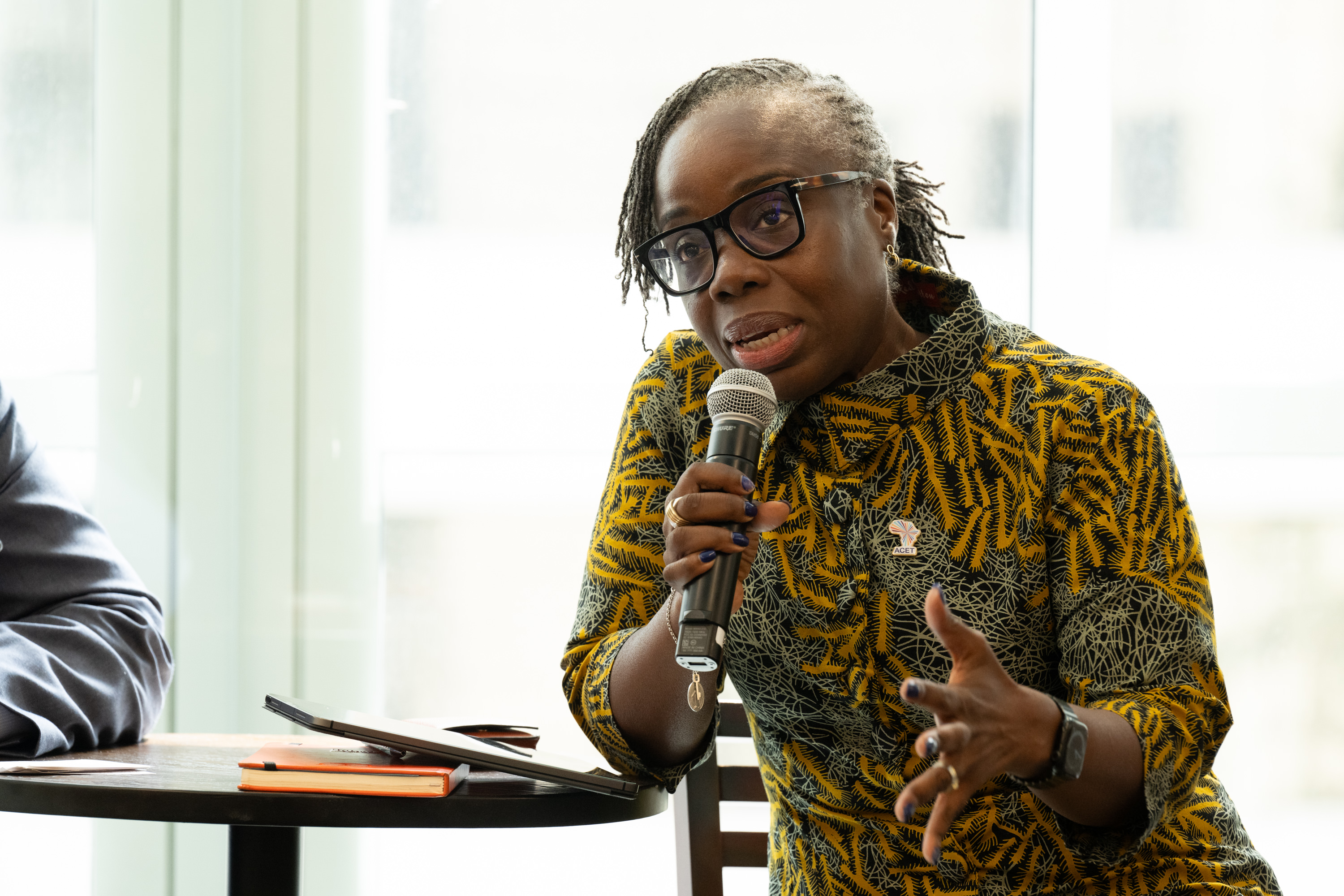 Kaveh Sardari
Kaveh Sardari
Mavis Owusu-Gyamfi responds to an audience question, offering insights on gender equality and economic transformation in Africa.
Moving forward with research, practical policy, and systemic change
This convening underscored the critical need to bridge research and policy by translating evidence into actionable recommendations and breaking down silos across economic subfields. Amidst global headwinds challenging policies, programs, and financing for gender equality, it is essential to sustain momentum, seize emerging opportunities, and continue engaging macroeconomists and economic decision-makers with rigorous evidence.
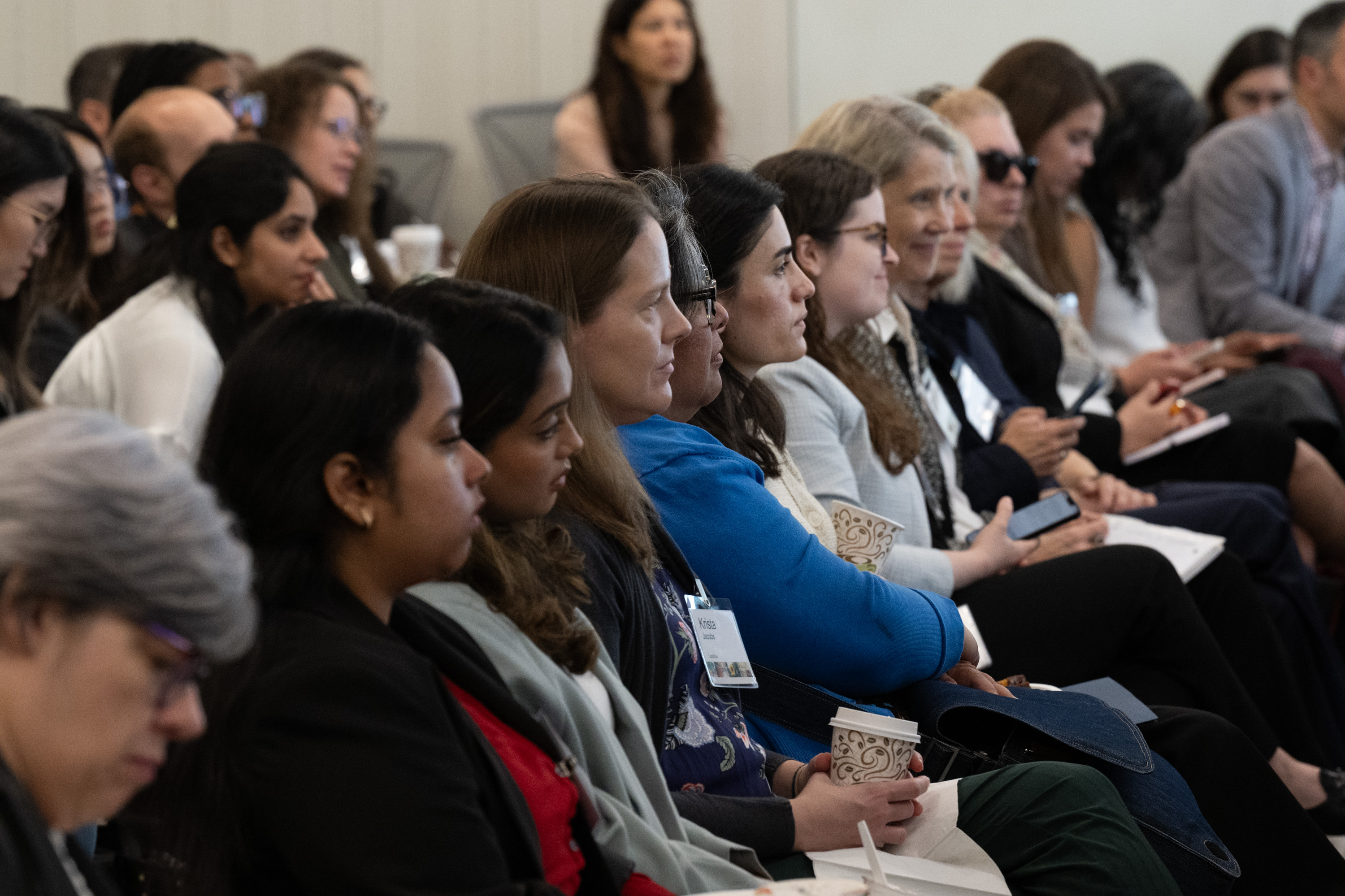 Kaveh Sardari
Kaveh Sardari
Audience members listen as speakers at the event offer a rigorous challenge to those voices that have treated gender equality as peripheral to macroeconomics.
Below are key recommendations that we drew from the convening:
Research frontiers:
- Diagnose policy failures, not just gender gaps: We must move beyond identifying "what" the problems are to interrogating "why" particular patterns persist and proposed solutions fall short. Some countries have good laws and policies supporting gender equity, but there are challenges that arise with implementation that limit their impact, such as lack of financing or political will to scale to a systemic or national level.
- Bridge micro-level insights with macro models: Economic models are greatly improved when they connect micro-level interventions and microdata with macro-level structural models and labor market outcomes. Strengthening this connection improves the relevance and impact of research findings in informing effective economic policy design.
- Model unpaid care work and care service provision: The availability of affordable and high-quality care services significantly shapes women’s economic participation, with particularly strong evidence on childcare. Though there has been progress, this critical aspect of unpaid domestic and care work distribution is still excluded from the majority of macroeconomic models. Future research should prioritize individual time-use data and model how informal, unpaid, and formal sector work interact and impact productivity within and outside the household.
Practical policy and financing solutions:
- Center gender in macroeconomic policy: As Doug Gollin commented, "Gender disparities aren't just a social issue — they're a macroeconomic issue that belongs early in the growth conversation…. There are more levers for driving growth than we once thought — closing gender gaps is one of them." Policies that center gender equality as a lever for transformation can drive inclusive growth, productivity, and economic development.
- Strengthen public finance capacity for gender equality: In some LMIC contexts, the capacity to cost and manage gender budgets or enact gender-responsive fiscal policy needs resourcing and strengthening at the ministry and local government levels. Thus, expanding capacity is essential, especially where political will exists.
- Create holistic labor market policies that take a life-course approach: There are interactions between what happens in households, life-course events, and labor and broader market dynamics. Complementary policies—for both employers and workers—are critical for equitable outcomes. To be the most impactful requires adopting a life-course approach that accommodates events like childbirth, health shocks, menopause, higher education, and other lifecycle events to reduce the sharp trade-offs that individuals often face.
Systemic societal change:
- Challenge gender norms and power imbalances: Deeply entrenched norms influence how time, work, and resources are distributed between men and women. Addressing these power dynamics across households, workplaces, and institutions is foundational to achieving gender equality.
- Go beyond alleviating single constraints: While education and skills development for women are important, they are insufficient on their own. Policies must also address systemic barriers across the life course, including regressive norms, skewed distribution of unpaid work, occupational and sectoral segregation, structural discrimination, and poor job quality to achieve more equal outcomes.
As global challenges continue to mount and structural transformation reshapes economies, integrating gender into economic thinking is essential. As Oriana Bandiera commented at the event, “There is no inherent trade-off between equality and efficiency — we are far from the frontier, and we can improve both."
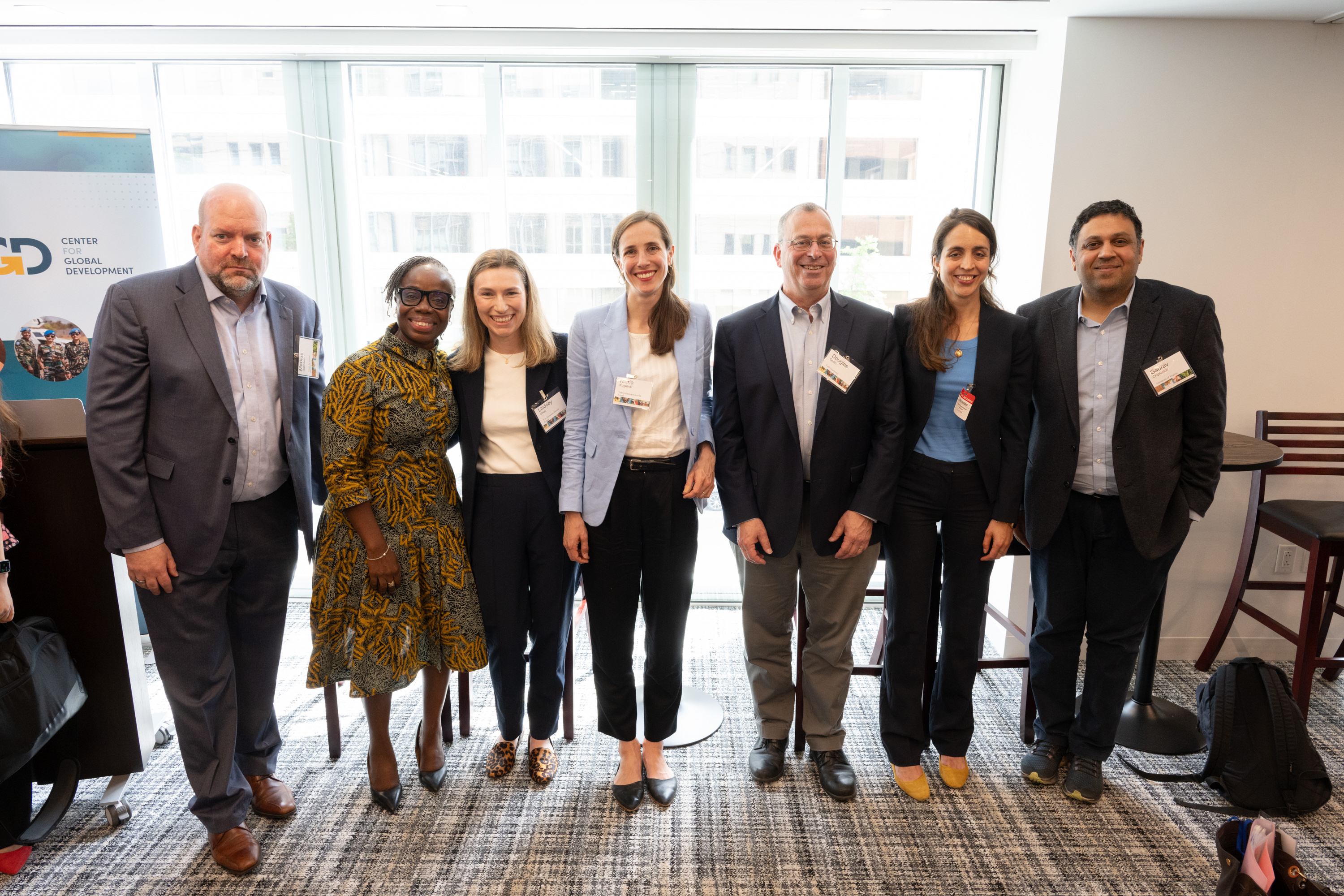 Kaveh Sardari
Kaveh Sardari
Speakers from the event organized by the Yale Economic Growth Center (EGC) and the Center for Global Development (CGD) and hosted by the Gates Foundation on the sidelines of the 2025 World Bank and IMF Spring Meetings.
The authors are grateful to Astha Mainali for her contributions to documenting and synthesizing the content of the event.